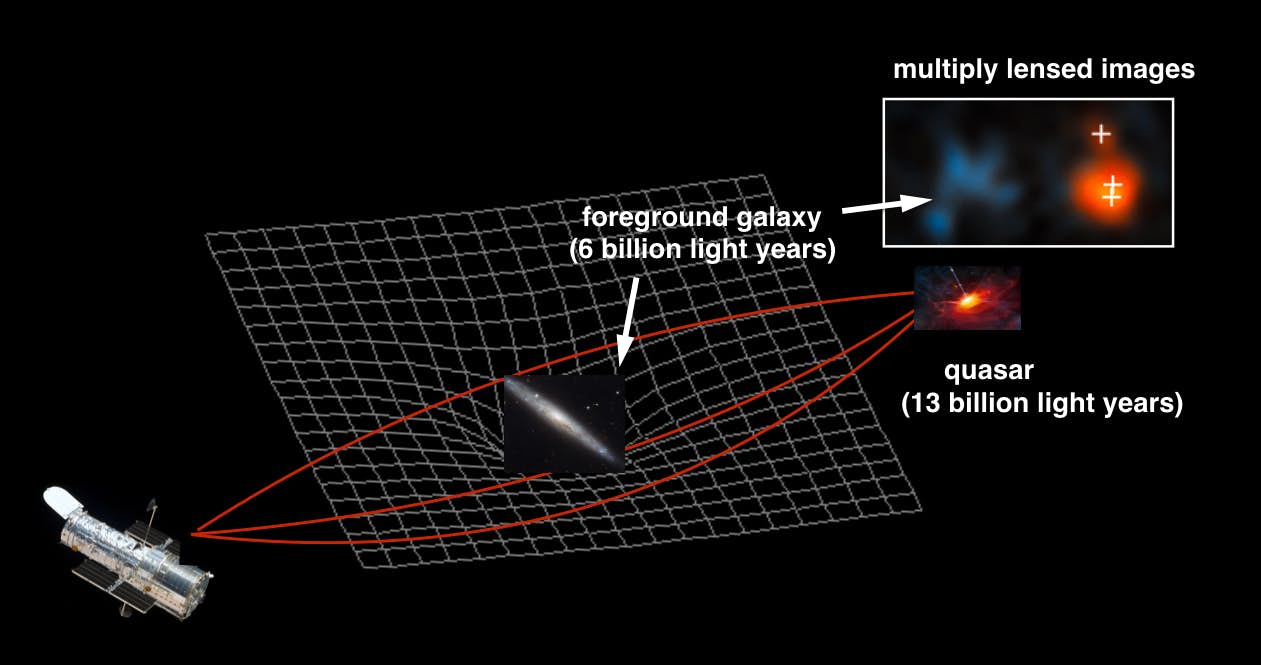From our point of view here on Earth, the brightest object in the sky is unquestionably the Sun. But this unremarkable star is a mere 10-watt bulb compared to quasars, extremely luminous galactic cores that shine so intensely thanks to their ravenous hunger for nearby material. Now, astronomers have detected the brightest quasar ever found, shining with the light of almost 600 trillion Suns.
The quasar, officially designated J043947.08+163415.7, pips the previous brightness records by a fair margin. Until now the title belonged to a quasar shining with the equivalent of 420 trillion Suns, while the most luminous galaxy found so far is “only” as bright as 350 trillion.
“We don’t expect to find many quasars brighter than that in the whole observable universe,” says Xiaohui Fan, lead investigator on the study.
While the logical next question is “How could astronomers miss something this incredibly bright?” the reason is simple. The quasar is almost an entire universe away, at a distance of 12.8 billion light-years. It was only spotted thanks to a strange physics phenomenon known as gravitational lensing.
Strong gravitational forces have the power to literally bend the path of light, according to Einstein’s theory of general relativity. In this case, the light from the quasar is warped by a galaxy roughly halfway between Earth and the quasar, which magnifies its brightness by 50 times. It also splits the image, so the quasar can be seen in three different places at once.

“Without this high level of magnification, it would make it impossible for us to see the galaxy,” says Feige Wang, a member of the team. “We can even look for gas around the black hole and what the black hole may be influencing in the galaxy.”
That magnification also allows astronomers to get a closer look at this distant object. Much of its brightness is due to dust and gas heating up as it falls into the supermassive black hole at the quasar’s center, but it’s also boosted by intense star formation. The team estimates that the host galaxy is producing as many as 10,000 stars every year, making the Milky Way look like a slacker with its one-star-per-year work ethic.
The fact that this bright quasar was missed for so long also highlights a potential flaw in the way astronomers search for these objects. The researchers say that because of their distance, most quasars are identified by their red color, but many may be obscured by galaxies between us and them that wash their color out so they look more blue.
“We think there probably are 10 to 20 of such objects that we haven’t found because they would have looked fuzzy and the colors not redshifted enough,” says Fan. “This by extension means that our traditional way of finding quasars may not work anymore, and we have to find some new, big data approach to broaden our search.”
The quasar was originally identified by the Multi-Mirror Telescope, after the team highlighted it as an object of interest in photometric data from the UK Infrared Telescope Hemisphere Survey, Pan-STARRS1 and the WISE archive. Finally, Hubble confirmed it as a lensed quasar, thanks to the clearer view it has from space.
The research was published in The Astrophysical Journal Letters and presented at the Meeting of the American Astronomical Society last week.
Source: University of Arizona


One comment